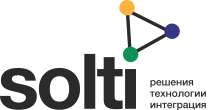Corel MindManager for Greater Employee Engagement in the energy company
Categories
Description
THE CHALLENGE
With its rates capped by government regulators and facing a tight economy, Consolidated Edison Company of New York, Inc. (Con Edison) embarked upon a program to find cost savings through a deep analysis of its internal processes. Discovering all variables affecting workplace process flow would enable targeted, specific, problem-solving improvements to be quickly devised and implemented. The objective was to capture and document all these elements.
Using Mindjet mapping software to create a Zero-Based Budgeting (ZBB) toolkit was the project management solution. All participants, from on-the-ground employees to department managers and IT engineers would interact and collaborate—producing a visual map of Con Edison’s specific process that detailed all variables and how the variables interacted.
THE SOLUTION
The Mindjet/ZBB toolkit facilitated discovery of how and why a specific process worked, with all touch points and elements included in a visual map: procedural tasks, administrative requirements, production processes, employee engagement.
Participant knowledge, factual and intuitive, was quickly discovered, with both existing process documentation and new ideas collected. Across sections and departments, union and management, “mapping enabled the teams to literally ‘see’ their problem-solving efforts come together in real time to form actionable plans,” notes Al Homyk, General Manager of Operations Services in Con Edison’s Bronx/Westchester Electric Operations Department.
THE RESULTS
After Mindjet/ZBB analysis of activities representing just 15% of its total operations and maintenance budget, Con Edison realized more than $600,000 in savings; additional savings are expected to be in the millions. Beyond these tangible gains, Mindjet/ZBB mapping has also yielded high value, intangible benefits, primarily in Con Edison’s corporate culture. This approach to process analysis and evaluation engages participants throughout the organization—valuing their input, stimulating creative problem solving and motivating a proactive mindset.
Employees are now empowered as stakeholders in their workplace environment, resulting in significant competitive advantage for Con Edison.
Details
Business tasks
Enhance Staff Productivity
Reduce Costs
Problems
Decentralized IT systems
High costs of routine operations
Complex and non-transparent business processes
Unstructured data











